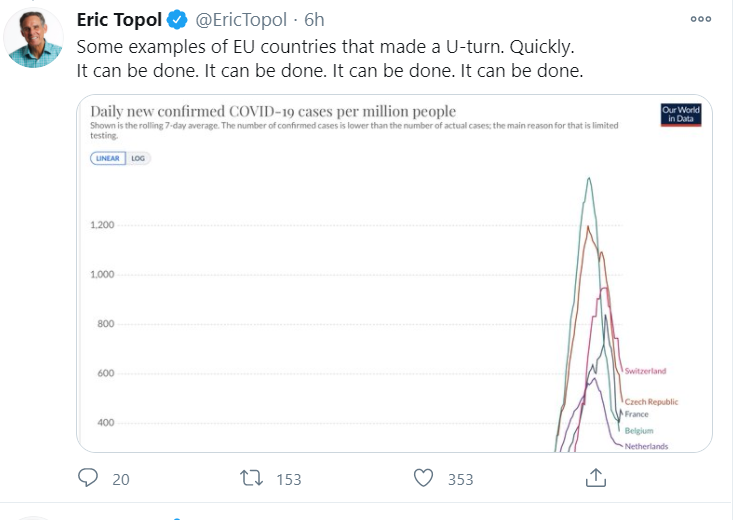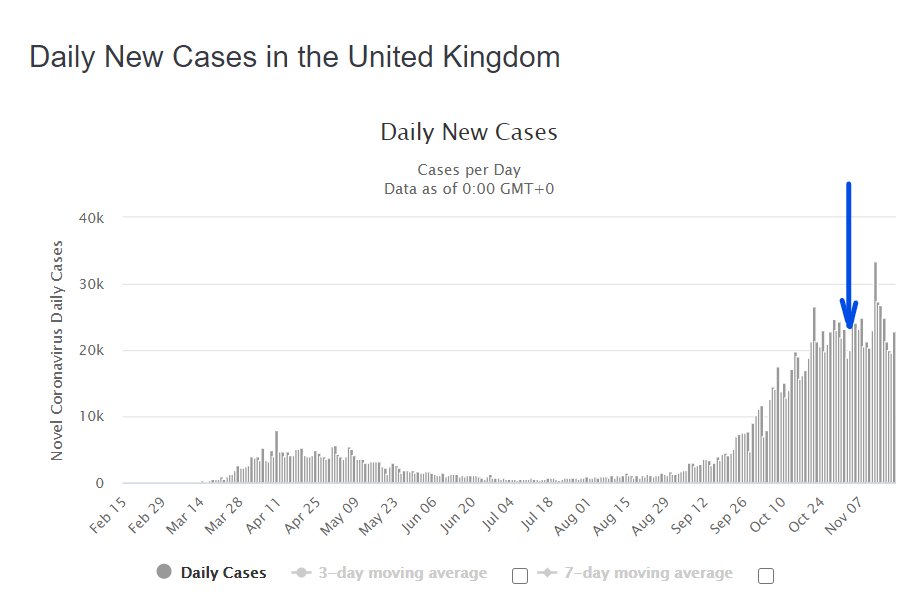
I am beginning to think that the widely accepted model of COVID mainly transmitting between close contacts via droplets is insufficient to explain the data and failing the Occam's razor. Instead, aerosols being the main route of transmission does better in both. (1/x)
Before I explain my reasoning, usual caveats: I am not a virologist/epidemiologist/medical professional/etc. I am just a scientist in another field who is observing the data and trying to make sense of it. So take the following with the usual grain of salt. (2/x)
First, what is Occam's razor? It means generally the theory which require the least number of assumptions is correct. A good example is geocentric vs. heliocentric models, the latter of which requires only one assumption - planets orbit the Sun. (3/x)




If main route was droplets:
1. Masks would actually work
2. Seasonality would be smaller since droplets follow gravity
3. People would have a better idea of from whom they got COVID.
4. Transmission by kids and adults would not be this much different. (4/x)
1. Masks would actually work
2. Seasonality would be smaller since droplets follow gravity
3. People would have a better idea of from whom they got COVID.
4. Transmission by kids and adults would not be this much different. (4/x)
We keep adding different explanations to account for the above, under the premise that main route is droplets. For example, to explain why kids transmit less, we say kids are shorter. However, a model of aerosols being the dominant mode would not require these. (5/x) 

1. Masks would make a bigger impact under a droplet-dominant spread. Masks can actually stop most/all droplets. However, despite 80-90+ % compliance in many places, we are seeing that the curves are the same, masks or no masks. This should not happen under a droplet model. (6/x)
2. Seasonality: Temp & humidity has greater impact on aerosols than droplets, and this likely impacts virus viability: "... aerosolized virus could remain infectious for extended periods of time under some environmental conditions." (7/x)
tandfonline.com/doi/full/10.10…
tandfonline.com/doi/full/10.10…
3. Most people have no idea where they got the virus. In many cases contact tracing does not yield any useful information. Close-contact droplet transmission would not be this difficult to track. (8/x)
miamiherald.com/news/coronavir…
miamiherald.com/news/coronavir…
Finally, it is possible that kids transmit less because they are less likely to generate aerosols. This explains lower incidence in schools. (9/x)
https://twitter.com/apsmunro/status/1332370255121969155?s=20
Despite all these, we are still insisting on a droplet model and trying to explain the above observations with secondary explanations. However, an aerosol-dominant model explain these perfectly. We need more research exploring the mechanisms of aerosol transmission. (10/x)
It is possible that early in an epidemic aerosols play a larger role, because despite carrying little virus, they spread more and easily infect a highly susceptible population. However, over time, droplets become the main route. (11/x)
This might explain the insistence on the droplet model: After all, every other respiratory virus spread via droplets. However, what we may be missing is that those other viruses are now endemic, and aerosols may be playing a smaller role for them (less viral load). (12/x)
Lastly, one final observation this would explain is why flu is nowhere to be seen. It is actually possible that masks/distance work wonders for the flu, since it is more established and mainly spreads via droplets. However, same measures do nothing to stop aerosols. (13/End)
• • •
Missing some Tweet in this thread? You can try to
force a refresh










